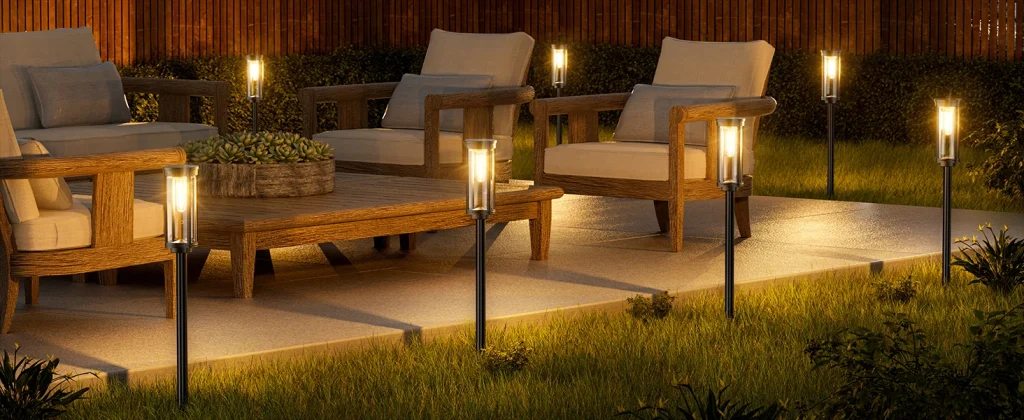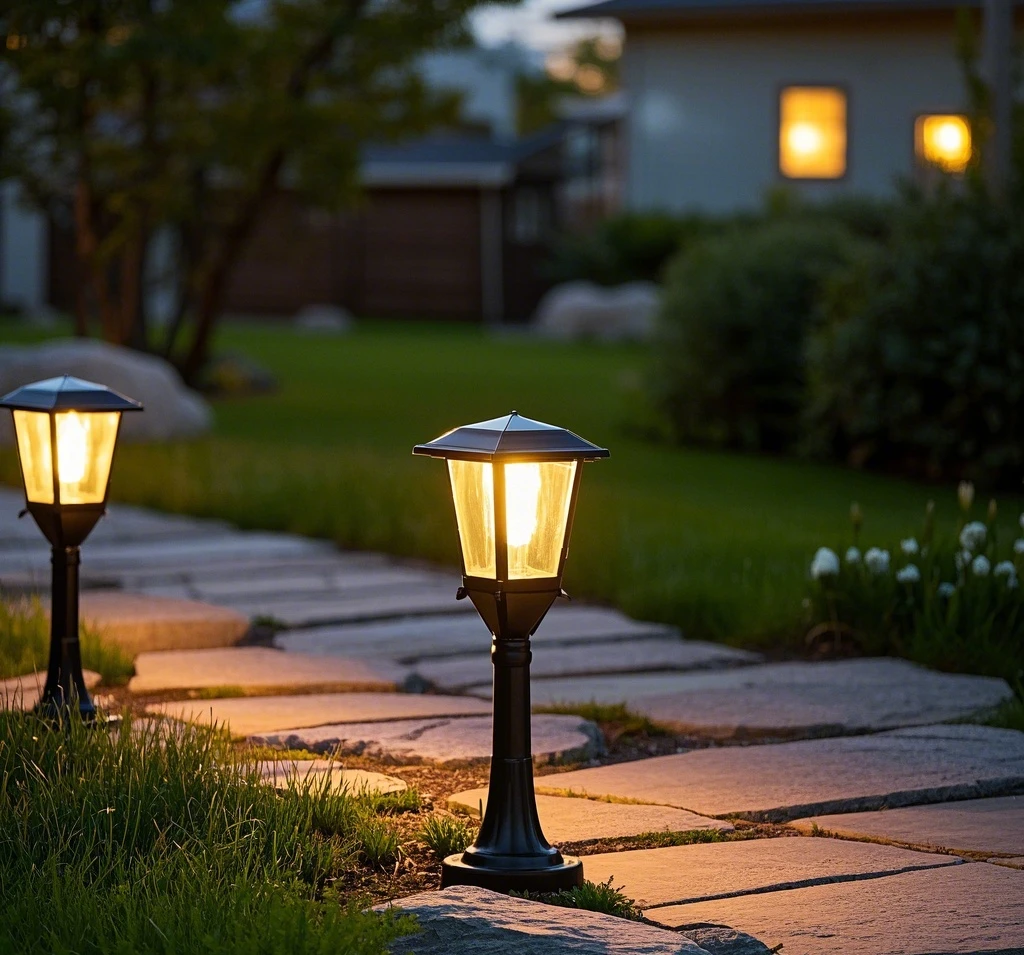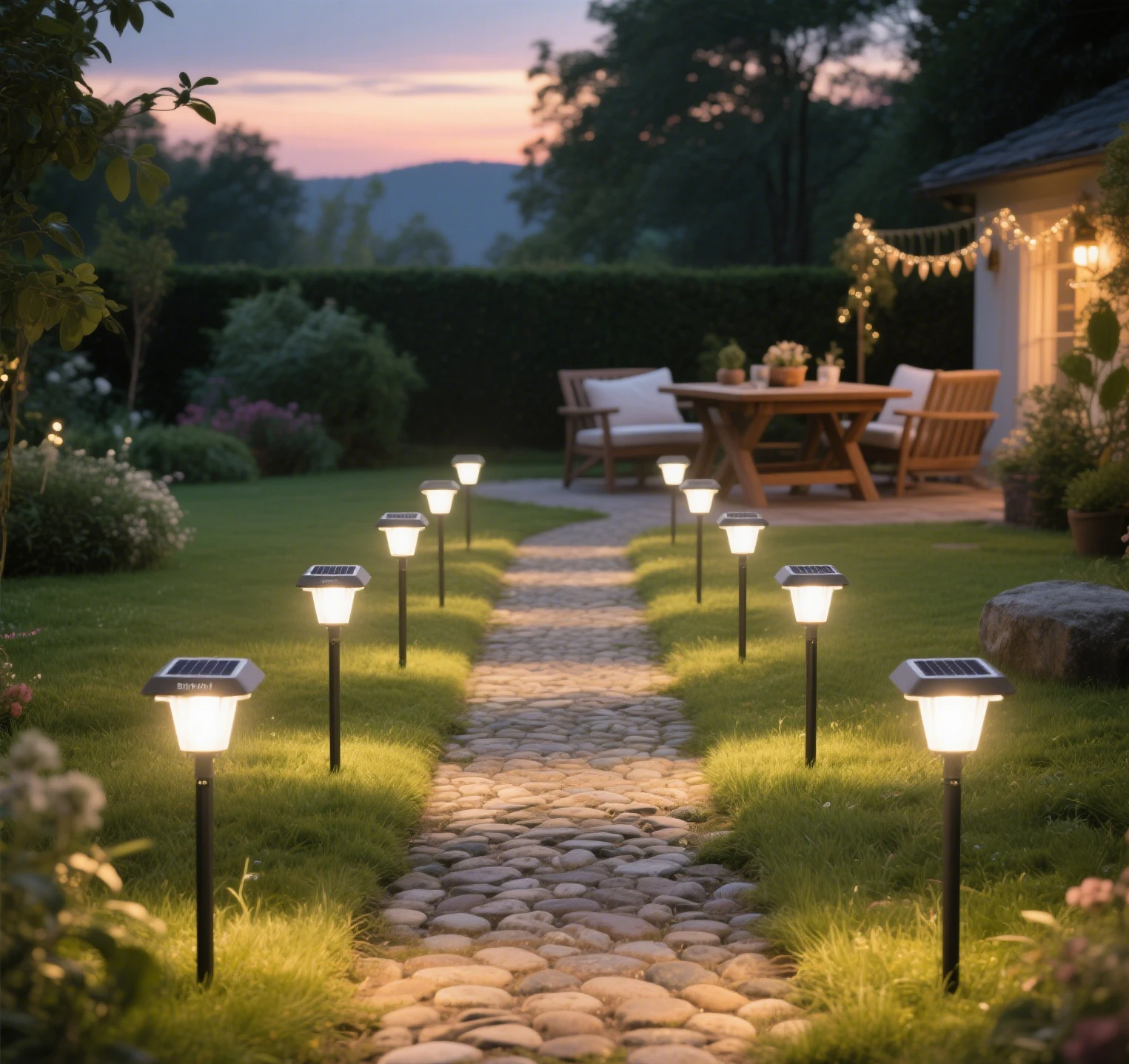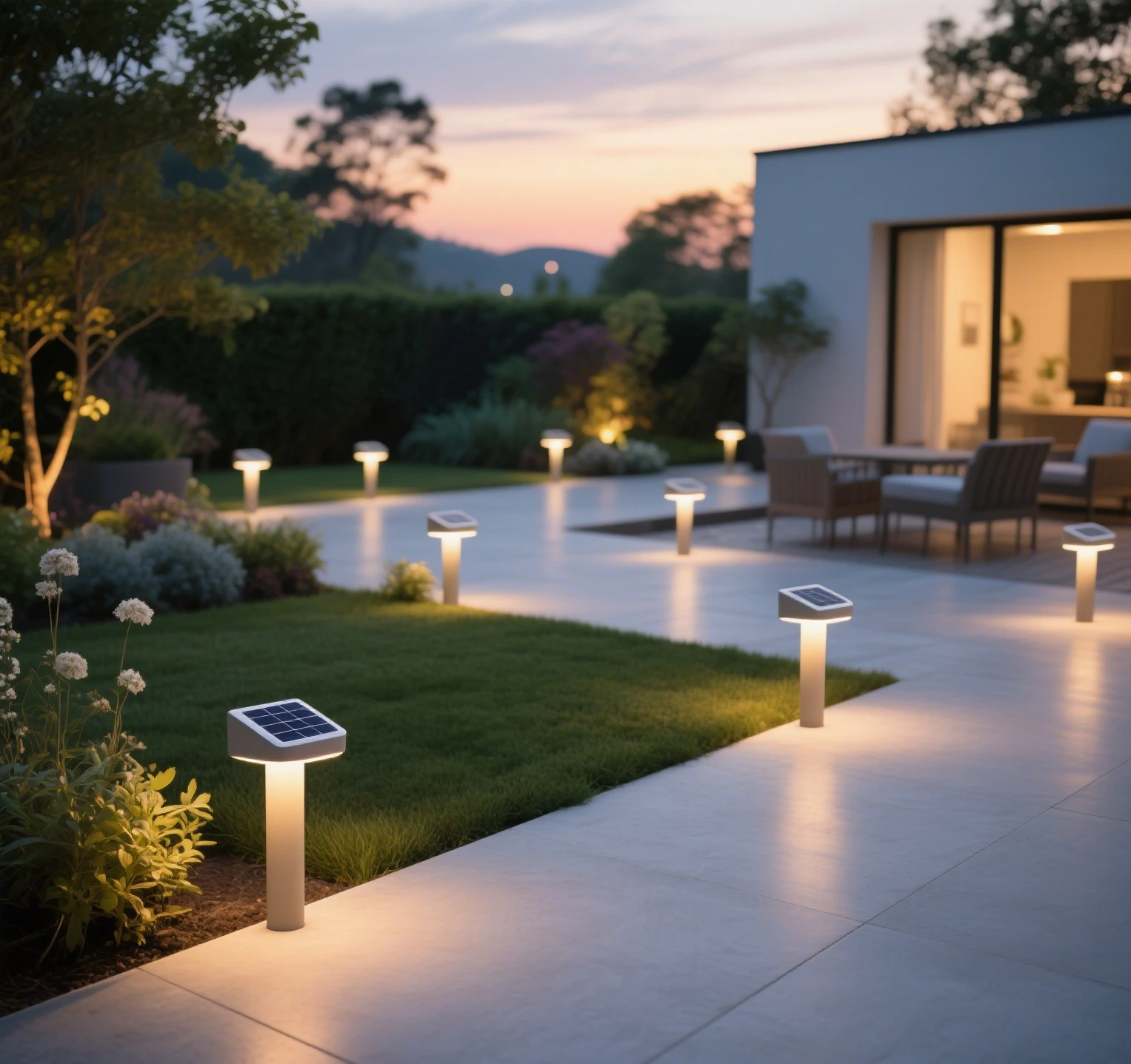The shift to sustainable energy has thrust solar lights into the spotlight. These eco-friendly fixtures brighten walkways, gardens, and yards while slashing energy costs and carbon footprints. Yet, with a flood of options—each boasting different specs and features—choosing the right one feels like navigating a maze. A poorly picked light dims too soon or fades in the rain; a smart choice glows reliably for years. This guide unpacks the essentials, from components to climate quirks, arming you with the know-how to match solar path lights to your unique space. Let’s dive in and light the way.

Grasping Solar Path Lights
Solar path lights are standalone wonders. A solar panel soaks up daylight, turning it into power stored in a battery. Night falls, and that energy fires up an LED, casting a glow across your path—no grid, no fuss. Think of them as tiny power plants staking your lawn, blending green tech with practical shine. The U.S. Department of Energy pegs solar lighting as a 75% energy saver over traditional setups, making them a no-brainer for cost-conscious, planet-minded folks.
Core Pieces of the Puzzle
Solar Panel: The Sun Catcher
The panel’s the heart. Monocrystalline versions hit 22% efficiency, outpacing polycrystalline’s 17%, per Solar Energy Industries Association data. A 2W panel in Seattle might grab 8Wh daily—enough for a night’s glow. Size and tilt matter; bigger panels and adjustable angles squeeze more from weak sun.
Battery: Nighttime Fuel
Batteries bank the day’s haul. Lithium-ion packs—say, 1000mAh—store dense energy, lasting 5-7 years with minimal upkeep. Lead-acid lags, fading in 2-3 years. Capacity dictates runtime; a 2000mAh unit powers a 1W LED for 20 hours, per NREL specs.
LED Fixture: The Glow Giver
LEDs rule here. A 1W bulb pumps out 100-150 lumens—bright enough for a walkway, soft enough for ambiance. Color temps (2700K warm, 5000K cool) set the mood. Lifespans hit 50,000 hours, says the Illuminating Engineering Society, dwarfing incandescent’s 1,000.
Controller: The Quiet Boss
Controllers keep it smooth. They guard against overcharging, tweak brightness, and often pack motion sensors. A smart one dims to 30% at 2 a.m., spiking to 100% when you stroll by—energy stays lean.
Stake or Mount: The Anchor
Stakes or low mounts—8-24 inches tall—hold firm. Stainless steel or ABS plastic resists rust and cracks. Height picks your beam spread; taller casts wider, shorter keeps it tight.
What to Weigh When Choosing
Sunlight and Spot
Your patch of earth sets the stage. Sunny Phoenix churns out 6 peak sun hours daily; cloudy Portland scrapes 3, per NOAA. Low-sun zones need high-efficiency panels (20%+) and beefy batteries (2000mAh+). A shaded yard? Angle panels south, clear of trees—every ray counts.
How Much Light You Need
Purpose drives power. A garden path might glow fine at 50 lumens, while a driveway demands 200. Measure your space—10 feet of walkway at 10 lumens per foot calls for 100 total. The American Lighting Association suggests 100-200 lumens for safety, 50-100 for charm.
Backup Power for Dark Days
Autonomy’s key—how long it shines sans sun. A 1000mAh battery with a 1W LED runs 10 hours; double it for two nights. Rainy spells or winter’s short days demand 2-3 days’ backup. A 2023 EnergySage test found top lights hold 72 hours—check specs.
Toughness in the Wild
Weather hits hard. IP65 ratings fend off dust and rain; IP67 laughs at puddles. Aluminum or UV-resistant plastic beats corrosion. A Maine user’s light survived -15°F snow; a Texas one took 110°F heat—durability’s non-negotiable.
Smart Tricks Up the Sleeve
Tech adds edge. Motion sensors catch you 15 feet out, jumping from 20 to 100 lumens. Timers dim post-midnight. IoT links let you tweak via app—say, softer glow for guests. A California study saw smart lights cut energy use 35%, per DOE records.
Budget vs. Payoff
A $20 light tempts; a $50 one lasts. Cheapies fade in a year—premium ones shine a decade. Factor stakes ($5-$10) and spares ($10-$20). Long-term, no bills and rare fixes win, says the National Association of Home Builders.
Why Solar Path Lights Pay Off
Cash Saved, Step by Step
No wiring, no electrician—$100-$200 saved upfront. A $0.12/kWh grid light costs $5 yearly; solar’s $0. A set of 10 at $30 each ($300) breaks even in 6 years, then banks $50 annually, per EPA math.
Green Glow, Guilt-Free
One light skips 10 pounds of CO2 yearly—10 lights, a car off the road for a month, per EPA. Solar’s renewable hum aligns with 2030 carbon goals, says the U.S. Climate Alliance.
Set It, Forget It
LEDs and batteries last 5-15 years. No bulbs to swap, no wires to mend. A quick panel wipe yearly keeps them humming—maintenance’s a breeze.
Stake and Shine
No trench, no permit—just push in. A 10-light path rose in an hour, per user logs. Remote cabins or urban yards, they fit anywhere.
Pitfalls to Dodge
Skimping on Power
A 0.5W panel in cloudy Ohio dies by midnight. Match wattage to sun hours—1W minimum for low light. Undersized batteries (500mAh) fade fast; aim for 1000mAh+.
Ignoring the Elements
IP44 flops in storms—IP65 or bust. Plastic stakes snap; metal endures. A Florida buyer lost $100 to rust in a year—check materials.
Overlooking Angles
Shade kills. A tree-blocked panel drops 50% output, per NREL. Test spots with a sun meter ($20) or eyeball it—full sun’s non-negotiable.
Top Picks to Start With
Brands like BITPOTT, SolarGlow, and EcoLight shine. BITPOTT’s 2W, 200-lumen stake (IP65, 1500mAh) tops reviews for brightness and grit. SolarGlow’s 1.5W, 100-lumen unit charms gardens. EcoLight’s motion-sensor model (1W, 1200mAh) nails efficiency. Dig into specs—wattage, lumens, runtime—and user buzz on EnergySage or Amazon.
Tailoring to Your Turf
Urban Alleys
Tight spaces need 50-100 lumens, 8-12 inches tall. Motion sensors catch late-night walkers. A Chicago row saved 20% with dimming, per city logs.
Rural Routes
Long paths crave 150-200 lumens, 2W panels, 2000mAh batteries. A Montana ranch lit 100 yards for $400—safety soared.
Garden Glow
Soft 50-lumen, warm LEDs (2700K) suit flowers. Adjustable stakes dodge shrubs. A Texas yard turned “meh” to “wow” for $150.
Solar path lights blend brains and beauty. Match panel power to your sun, battery to your nights, and features to your life. A $300 set saves $500 over a decade, cuts carbon, and lights your way—pick right, and the dark’s no match.







Leave a Reply